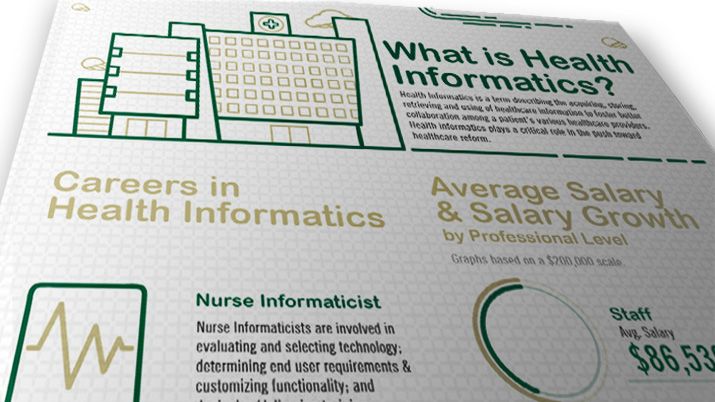
A patient must be suffering from a progressive, life-limiting condition in order to be eligible for hospice. Patients must also have a physician who can give a patient a life expectancy and is willing and able to work with the hospice staff. This physician must also have admitting privileges at an affiliated medical center. When the patient requires hospitalization, the hospice team must arrange coverage. Last but not least, the patient needs a person capable of making decisions for him/herself.
COPD patients
COPD patients don't always know when they're ready to go into hospice. But there are signs they could be eligible. You should look out for signs such as difficulty breathing, frequent hospitalizations for lung infections, low or high blood CO2 levels, and trouble breathing. In addition, hospice patients with COPD tend to live longer than the standard six-month range, giving them even more benefits than those without COPD.
Hospice care can ease the pain of COPD patients. Patients should be able to stand up and walk comfortably at home. Patients should not have had more than three hospitalizations in the past three month. They should also not wish to be intubated.

Patients with Alzheimer's disease
Patients suffering from Alzheimer's often meet the criteria required for hospice. Advanced forms of Alzheimer's disease cause progressive decline in mental abilities such as reasoning, judgment, speech, and speech. Patients with this disease have a reduced appetite and a loss of interest in social interaction. They also experience deterioration in their functional status. Incontinent bowel and bladder function are two other factors that can make someone eligible for hospice.
Hospice criteria can be met by patients suffering from Alzheimer's disease whose prognosis is less than six month. The patient must also have been diagnosed with dementia and have not had any complications. Hospice care has the goal of providing the best care for Alzheimer's sufferers.
UIHC hospice patients
To determine if a patient meets the criteria for UIHC hospice care, a doctor reviews the patient's most recent discharge summary. To determine eligibility, the doctor will compare the primary and second diagnoses of the patient with the NHPCO worksheets. The doctor also collects patient-specific data, such as laboratory values, vital signs, and imaging studies.
The Mercy Hospice Unit at the UIHC currently has six beds. It accepts patients who are not suitable for inpatient general care. This type of hospice care focuses on the patient's physical, spiritual, and emotional needs. A Plan of Care is created by the hospice team in collaboration with the patient's physician. It is based on the patient’s symptoms, diagnosis, and needs. Before the patient can be admitted, their physician must approve any treatment options.

Patients with advanced illnesses
Hospice is a form hospice care for patients with short life expectancies who are unable or unwilling to receive curative treatment. It aims to improve quality of life and avoid painful or debilitating treatments. Patients who qualify for hospice care must have a diagnosis of a terminal illness and six months or less to live. Some insurance companies provide hospice care coverage for up to one-year. However, most people do not receive hospice care until their final days or weeks. Patients can enjoy quality time for months, or even years if they get it early.
Hospice care is only available to patients who have been diagnosed with ALS, congestive cardiac failure, or kidney disease. Patients must also be diagnosed with a terminal illness that cannot be curable. Patients suffering from these conditions should have severe mental and physical impairments.
FAQ
What will be the impact on the health care industry if there will be no Medicare?
Medicare is an entitlement that provides financial help to low-income persons and families who cannot pay their premiums. This program provides financial assistance to more than 40 million Americans.
Millions of Americans could lose coverage without this program because private insurers wouldn't offer policies to people with preexisting conditions.
What are the different types and benefits of health insurance
There are three types of insurance that cover health:
-
Private health insurance covers most of the costs associated with your medical treatment. This type insurance is often purchased directly by private companies. Therefore, you will pay monthly premiums.
-
Public health insurance covers most of the cost of medical care, but there are limits and restrictions on coverage. Public insurance doesn't cover everything.
-
The medical savings account (MSA) is used to help you save for future medical expenses. The funds are kept in a separate account. Many employers offer MSA programs. These accounts are exempt from tax and earn interest at rates comparable to savings accounts.
What happens if Medicare is not available?
There will be an increase in the number of uninsured Americans. Employers will be forced to terminate their employees' plans. Many seniors will be responsible for higher out-of–pocket expenses for prescription drugs, and other medical services.
What role do I play in public health?
Participation in prevention programs can help you and others protect their health. Public health can be improved by reporting injuries and illnesses to health professionals, so that they can prevent further cases.
What is the difference between the health system and health care services?
Health systems can be more than just providing healthcare services. They encompass all aspects of the life context, including education, employment and social security.
Healthcare services, however, are focused on providing medical treatment for specific conditions, such as diabetes or cancer.
They may also refer the provision of generalist primary health care services by community-based professionals working under an NHS hospital trust.
How can I ensure that my family has access health care of the highest quality?
Most states will have a department for health, which helps to ensure that everyone has affordable access to health care. Some states also have programs to cover low-income families with children. Contact your state's Department of Health to learn more about these programs.
What is a Health System?
All aspects of healthcare, from prevention to rehabilitation, are covered by health systems. It includes hospitals, pharmacies and community services.
Health systems are adaptive complex systems. They exhibit emergent properties that can't always be predicted just by looking at the individual components.
It is difficult to manage and understand complex health systems because of their complexity. This is where creativity is needed.
Creativity can help us solve problems that we don’t have the answers to. We use our imaginations to create new ideas and develop ways to improve things.
Because they are constantly evolving, health systems require people who think creatively.
Creative thinkers can make a difference in the way that health systems work.
Statistics
- Over the first twenty-five years of this transformation, government contributions to healthcare expenditures have dropped from 36% to 15%, with the burden of managing this decrease falling largely on patients. (en.wikipedia.org)
- The health share of the Gross domestic product (GDP) is expected to continue its upward trend, reaching 19.9 percent of GDP by 2025. (en.wikipedia.org)
- The healthcare sector is one of the largest and most complex in the U.S. economy, accounting for 18% of gross domestic product (GDP) in 2020.1 (investopedia.com)
- Consuming over 10 percent of [3] (en.wikipedia.org)
- For instance, Chinese hospital charges tend toward 50% for drugs, another major percentage for equipment, and a small percentage for healthcare professional fees. (en.wikipedia.org)
External Links
How To
What are the 4 Health Systems
Healthcare is a complex network that includes hospitals, clinics and pharmaceutical companies as well as insurance providers, government agencies, public officials and other organizations.
The ultimate goal of the project was to create an infographic that would help people to better understand the US health system.
These are some key points.
-
Annual healthcare spending amounts to $2 trillion, or 17% of GDP. It's nearly twice the size as the entire defense budget.
-
In 2015, medical inflation reached 6.6%, which is higher than any other consumer category.
-
Americans spend an average of 9% on their health costs.
-
There were more than 300 million Americans without insurance as of 2014.
-
The Affordable Care Act (ACA) has been signed into law, but it isn't been fully implemented yet. There are still large gaps in coverage.
-
A majority of Americans believe that the ACA should continue to be improved upon.
-
The US spends more money on healthcare than any other country in the world.
-
If every American had access to affordable healthcare, the total cost would decrease by $2.8 trillion annually.
-
Medicare, Medicaid, private insurers and other insurance policies cover 56%.
-
People don't have insurance for three reasons: they can't afford it ($25 Billion), don’t have enough time to search for it ($16.4 Billion), and don’t know about it ($14.7Billion).
-
HMO (health management organization) and PPO(preferred provider organisation) are the two types of plans.
-
Private insurance covers the majority of services including doctors, dentists and prescriptions.
-
The public programs include hospitalization, outpatient surgery and nursing homes. They also cover long-term care and hospice care.
-
Medicare is a federal program that provides health coverage to senior citizens. It pays for hospital stays, skilled nursing facility stays, and home health visits.
-
Medicaid is a joint federal-state program that provides financial assistance for low-income individuals or families who earn too little to qualify for other benefits.